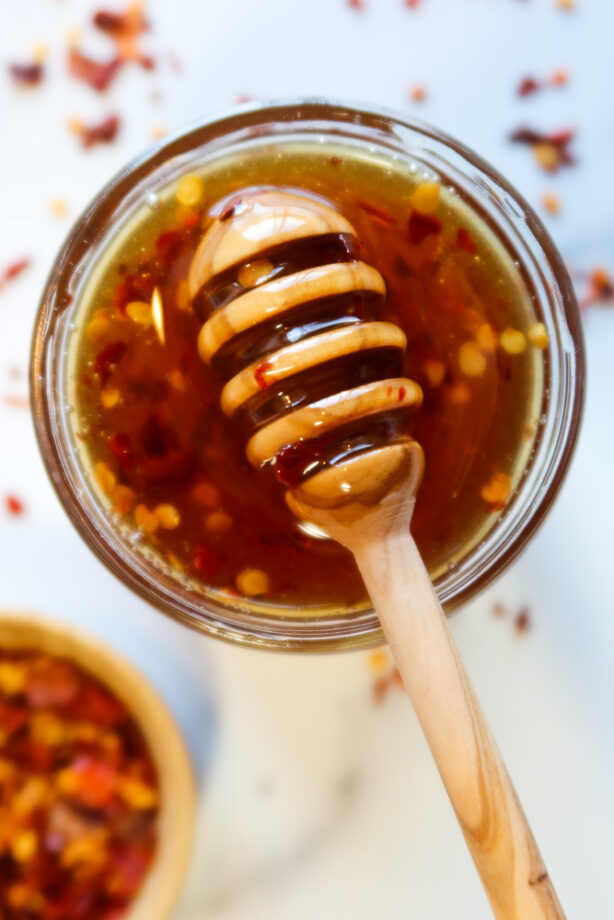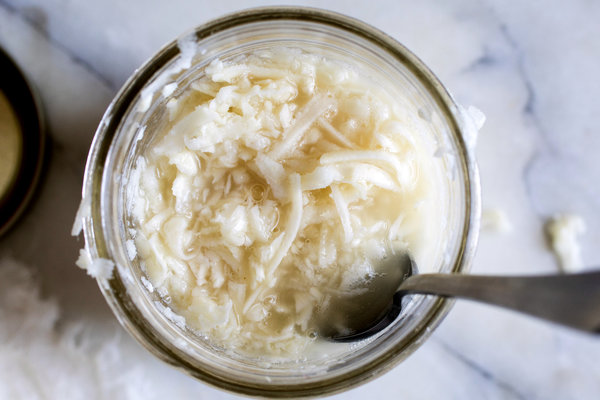H IS FOR HOT HONEY
By:
April 15, 2023

An installment in CONDIMENT ABECEDARIUM, an apophenic food-history series from HILOBROW friend Tom Nealon, author of the seminal book Food Fights and Culture Wars: A Secret History of Taste (2016 UK; 2017 US); and also — here at HILOBROW — the popular series STUFFED (2014–2020) and DE CONDIMENTIS (2010–2012).
CONDIMENT ABECEDARIUM: SERIES INTRODUCTION | AIOLI / ANCHOVIES | BANANA KETCHUP / BALSAMIC VINEGAR | CHIMICHURRI / CAMELINE SAUCE | DELAL / DIP | ENCURTIDO / EXTRACT OF MEAT | FURIKAKE / FINA’DENNE’ | GREEN CHILE / GARUM | HOT HONEY / HORSERADISH | INAMONA / ICE | JALAPEÑO / JIMMIES | KECAP MANIS / KIMCHI | LJUTENICA / LEMON | MONKEY GLAND SAUCE / MURRI | NƯỚC CHẤM / NUTELLA | OLIVE OIL / OXYGALA | PIKLIZ / PYLSUSINNEP SAUCE | QIZHA / QUESO | RED-EYE GRAVY / RANCH DRESSING | SAMBAL / SAUERKRAUT | TZATZIKI / TARTAR SAUCE | UMEBOSHI / UNAGI SAUCE | VEGEMITE / VERJUS | WHITE GRAVY / WOW-WOW SAUCE | XO SAUCE / XNIPEK | YOGHURT / YEMA | ZHOUG / ZA’ATAR | GOOD-BYE TO ALL TZAT(ZIKI).

I used to use oregano
Eating pizza on the patio.
But now I know that’s a no-go
Hot honey on top is the show.
Yo.I need hot viscous on my
biscuits
That spicy ooze on my foods.Yes please, put it on my cheese.
I’m on my knees, don’t tease.
(Though it might make you
sneeze
If you’re intolerant to all that
pollen in it)I put it on my hot dogs, in my
egg nog.
Yeah, towards oblivion life’s a
slow slog.
But hot honey will make Smaug
your analog
Collecting fiery tastes in your
flavor catalog.I need hot viscous on my
biscuits
That spicy ooze on my foods.On my toast, with my marmite
You might think that’s weird,
right?
But that umami, it’s not alarming
Makes hot honey more enticing,
sweet-spicy.Someday hot honey might just
disappear
Poof like fad fondue or the kale
shmear.
And if it does sure, I’ll shed a
tear
Stuck somewhere no-hot-honey
pooh bear.No more hot viscous on my
biscuits
No more spicy ooze on my
foods.
[Broods]
Though, of course, it’s easy enough to make your own — even just a bunch of red pepper flakes, honey, and a touch of vinegar, is delightful. It also mixes well with powdered chile, hot sauce, or crushed dried pods (chile arbol are a good choice).

It’s been around forever — Pliny mentions it, the ancient Egyptians ate it — but what do we really know about horseradish? I have it on good authority that it’s a plant in the broccoli family and that its leaves are edible, but do we eat them? I have my doubts. The root is a long, lumpy, unassuming thing that on routine inspection gives no hint as to its flavor or even that it is edible. It is a central part of Russian, German and Polish cuisines and has the reputation of being something that you either love or hate except, as with many things that we say that of, most people are simply indifferent to its existence. Outside of certain Eastern European circles it has been modestly popular with little waxing and waning for 3-4,000 years. The Egyptians liked it ok, it was a somewhat popular in Greek medicine and food, the Romans thought it was not bad. Pliny in his 77 A.D. Naturalis Historias said: “Horseradish. You can eat it.”
Until, of course, wasabi got so popular that it overwhelmed the wasabi farming industry and caused everyone to just use horseradish, a little mustard and green coloring to fill the world with ersatz wasabi. It’s a blow when you first find out that most of that slightly exotic wasabi you’ve been enjoying is actually just horseradish that has been dressed up and dyed green like a sad St. Patrick’s day beer. But, really, it’s good news! If you’ve been enjoying all this “wasabi” you probably actually like horseradish which is cheap, plentiful, and easy to find and grow!
Wasabi and horseradish both, like mustard, are full of isothiocyanates, a plant defense mechanism that is responsible for that bracing sinus heat. In the case of horseradish and wasabi, when grated, elements of the root enzymatically digest themselves to produce a new chemical. This process has both positives and negatives — when grated directly onto food, the flavor is bright and fresh because that taste just came into being, but it fades fast. In ten minutes or so that taste has dissipated, which is why when you prepare horseradish you have to keep it from oxidizing and losing its flavor (usually with water, vinegar, sour cream, mayo; some people use olive oil).
Growing up a friend of mine had a grandmother who, when they went out to eat or over to a goyim house for dinner, would keep a piece of horseradish root in her purse with a tiny grater. I just assumed she was crazy, but in retrospect, she was a genuine horseradish enthusiast. Sure her purse smelled a little funny, but she was always able to dress up that piece of meat or fish without resorting to substandard “prepared” horseradish whose best moments are long behind it. Powdered wasabi (also usually fake or mostly fake) functions on the same basic principle, just not quite as well. The enzymatic reaction takes place when water is added — but, naturally, the drying and packaging and sitting around all take a toll. Much easier to just grate it on fresh.
Hot sauce in your bag? Of course. But horseradish in your purse? Worth a try. Horseradish has resisted commercialization because it is so ephemeral, its delights circumscribed by enzymes and oxygen and time, but all of these things make it ideal for deploying ourselves. After lingering for millennia as a mid-list condiment, thanks to the great wasabi switcheroo this could finally be horseradish’s moment.
But be careful out there! Good, fresh horseradish has a similar central nervous system overloading effect to a really hot chile pepper. If you get too much shooting up into your head, you may find yourself momentarily paralyzed as your body tries to sort out WTF is happening. Unlike with chile pepper, it does pass pretty quickly, so just wait it out.
TOM NEALON at HILOBROW: CONDIMENT ABECEDARIUM series | STUFFED series | DE CONDIMENTIS series | SALSA MAHONESA AND THE SEVEN YEARS WAR | & much more. You can find Tom’s book Food Fights & Culture Wars here.
